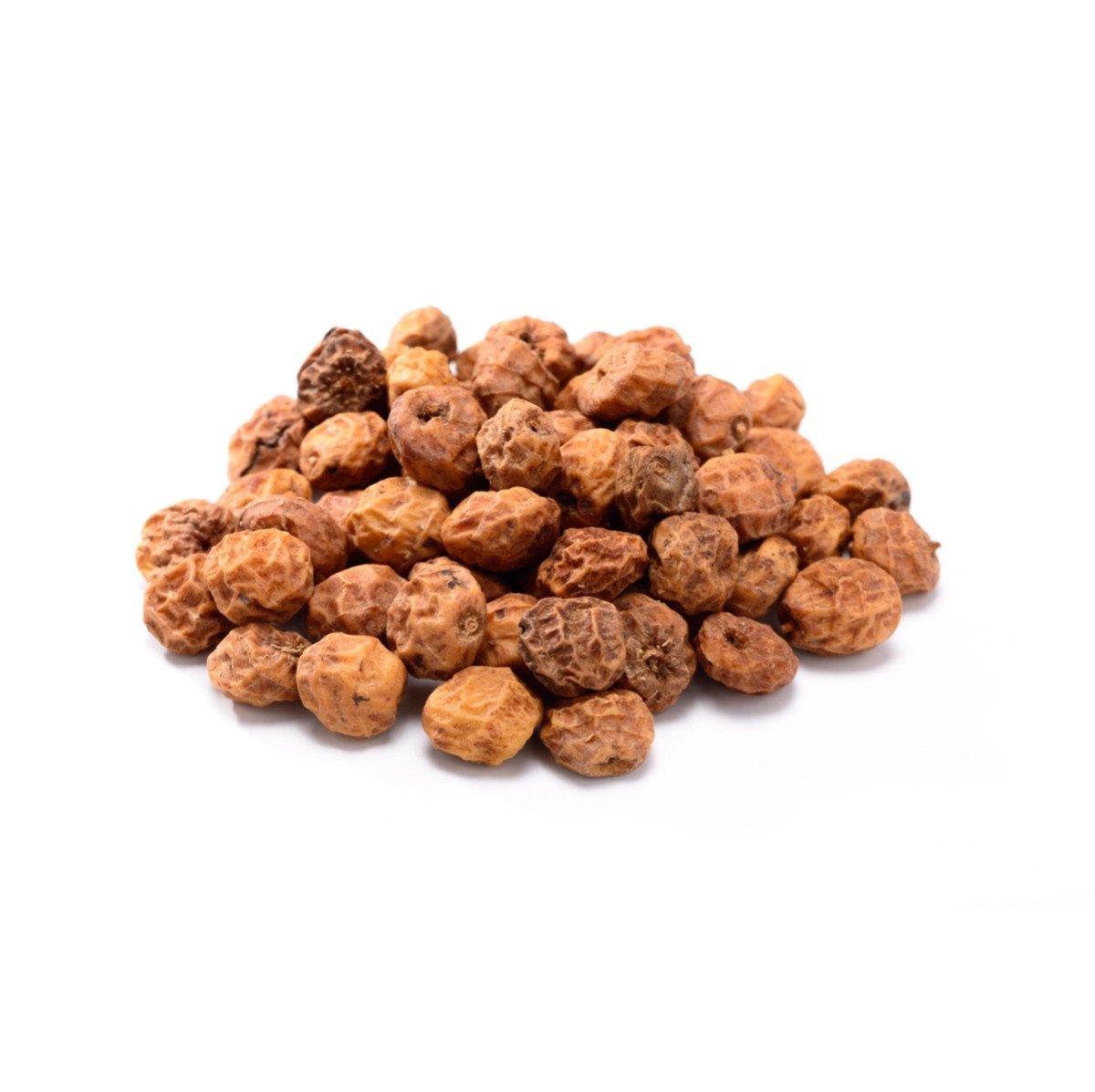Chufa / Tiger nut

Chufa / Tiger nut
Cyperus esculentus
Plant family
Sedge family (Cyperaceae)
Also known as
Atadwe, Yellow Nutsedge, Earth Almond
Season Overview
Propagating
Planting
Harvest
J
F
M
A
M
J
J
A
S
O
N
D
Details
Light requirement
Sunny
Water requirement
Wet
Soil
Light (sandy)
Nutrient requirement
Medium
Plant distance
30 cm
Row spacing
30 cm
Seeding depth
3 cm
Instructions
Description
The tiger nut (Cyperus esculentus) is also known as the tiger nut or chufa nut. It came to Europe in the 8th century via Spain. Contrary to its name, it is not related to the almond, but belongs to the acid grasses (Cyperaceae), so the are also suitable for allergy sufferers. It grows between 30-60 cm/11.8-23.6 in high and has grass-like leaves. The yellow flowers rarely form in our country. The light brown-black nodules on the roots grow up to 3 cm/1.2 in in size. They have a sweet-nutty taste, which has given them the name tiger nuts. Due to the high fiber content, they are very well tolerated and can also be eaten raw or ground into flour. However, as it is an invasive species in our country, it multiplies in fields, so root barriers should be placed around the plant and flowering should be prevented. The tiger nut needs a warm, protected location for the nodules to form.
Origin:
Africa
Growing tips
The germination of tiger nuts takes place between 20-25°C/68-77°F. For this purpose, the tubers can also be soaked overnight in water. After germination, the plants are placed a little cooler and from mid-May after the last frosts are placed outdoors. They can also be cultivated in a tub. In cool temperatures, cover with a fleece. Place a root barrier outdoors to prevent sprawl and protect native plants. Tigernuts are generally very low maintenance but need regular moisture and the soil should be fertilized or enriched with compost before planting. In mild winters, plants may even resprout the following year. For harvesting, the roots of the yellowed leaves are dug up, and the tubers are removed. However, wash them just before use, otherwise the shelf life will be shortened. Otherwise, the tiger nut is robust and little susceptible to disease.
Companion Plants
No companion plants
Antagonistic Plants
No antagonistic plants
Diseases
No diseases
Pests
No pests